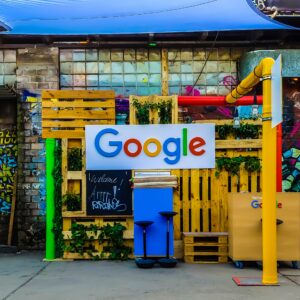Reactive digital PR, or newsjacking, can be a simple, effective and low budget way to generate high quality coverage and backlinks for your brand. Done correctly, it can help boost your SEO performance, as well as impacting brand awareness and allowing you to ‘own’ your chosen space within the media.
It’s all about capitalising on trending topics and news cycles to land valuable backlinks and media coverage. Unlike the larger, meticulously planned “hero” PR campaigns, reactive PR allows you to create quick, impactful content that resonates with journalists and your target audience. While long-term strategic PR remains crucial, incorporating reactive campaigns helps you secure consistent coverage throughout the year, keeping your brand relevant by ensuring you’re always a part of the conversation.
This post will explain what reactive digital PR is and the benefits it offers, as well as helpful tips on how to successfully introduce it to your marketing strategy. We’ll also look at proactive digital PR, how it differs, and what it can offer for your strategy.
What is Reactive Digital PR:
Put simply, reactive digital pr involves reacting to current events with either expert comments or useful data. With reactive, you’re keeping a close eye on news, waiting for the moment where a story relevant to your brand’s niche breaks. It relies on identifying the perfect moments to interject with valuable commentary. The key lies in expertise: if your client has unique data or in-house specialists, their insights can be valuable contributions to the conversation sparked by the news story.
Reactive PR plays a crucial role in steadily building your online presence over time and bridging the gaps between larger, planned campaigns.
Let’s illustrate this with a real-world scenario. We recently executed a successful reactive campaign for our client specialising in medical negligence. When news emerged about Chas Dingle’s breast cancer diagnosis in Emmerdale, we saw a chance to raise awareness about the importance of early detection. We promptly secured expert commentary from one of our client’s internal healthcare professionals on the topic of recognisable symptoms. This resulted in valuable coverage from various publications, positioning our client as a trusted source of information.
What about Proactive Digital PR:
While very similar, the key difference between reactive and proactive digital PR is in the name. Reactive digital PR is unplanned, reacting to the latest news, while proactive digital PR can be planned in advance. Admittedly, predicting the exact news cycle is impossible – however, we can anticipate potential areas of interest. An effective strategy is to analyse the previous year’s news headlines to identify recurring themes and events.
This would usually be based around key dates coming up in the calendar, for example:
- Holidays: Easter, Valentine’s, Christmas etc.
- Seasonality: Daylight savings, extreme weather, spring/summer etc.
- Financial: Government budget, inflation rates, tax returns etc.
- Pop Culture: Awards season, TV & movie release dates etc.
- Sport: Olympics, World Cup, Superbowl, Premier League season etc.
That being said, jumping on every fleeting trend isn’t the answer. The key is to strategically select opportunities that align with your brand and resonate with their target audience.
What are the benefits of Reactive Digital PR:
Reactive digital PR offers unique advantages and should certainly be a significant part of your overall strategy. Here’s why:
- Low-cost
Reactive digital PR leverages existing news stories, minimising the need to put substantial resources towards your own data collection or content creation. This makes it much more cost-effective than some other approaches to digital PR.
- Quick turnaround
The beauty of reactive digital PR is that, by capitalising on current events, you can secure links in a quick time frame. Due to the time-sensitive nature of newsjacking, you can receive media placements more immediately than in a longer-term campaign where results often require patience.
- Boost SEO performance
Links earned through reactive PR placements in high-authority publications send strong signals to search engines about your website’s experience, expertise, authority and trustworthiness (E-E-A-T). This can significantly boost your website’s ranking in search results, leading to increased organic traffic and brand visibility.
- Amplified brand awareness
Reactive digital PR ensures your brand is consistently appearing in the media. This exposure significantly increases brand awareness and recognition, keeping your company at the forefront of your target audience’s mind.
- Builds your reputation as experts
When you frequently provide valuable commentary or data tied to trending news stories, you establish your brand as a trusted authority within your niche. Journalists take notice, and this can lead to a snowball effect. They’re more likely to reach out directly in the future for your expert opinions for upcoming stories, further solidifying your reputation as a thought-leader in your field.
How to spot opportunities for Reactive Digital PR
Wondering how to spot those golden opportunities for reactive digital PR? Here are our secrets:
- Monitor the news
Develop a habit of consuming news content regularly, both within your specific industry and across broader topics. Subscribe to industry-specific publications and follow relevant journalists on social media. The more content you consume, the more chance you have of spotting opportunities
- Set up alerts
Use tools like Google Alerts and Talkwalker Alerts to stay on top of keywords and topics relevant to your brand. You’ll receive real-time notifications whenever these keywords appear online, allowing you to react quickly to breaking news and trending stories.
- Sign up to journo request services
Platforms like ResponseSource & HARO connect journalists with PRs; by actively monitoring these platforms, you can identify opportunities to provide insightful commentary and secure media placements.
- Keep an eye on relevant hashtags
Twitter is a goldmine for journalists seeking expert opinions. Monitor hashtags like #journorequest and you’ll be able to seize prime opportunities for reactive PR.
Our top tips:
We’ll finish by doing you a favour and giving you our ultimate top tips for a successful reactive PR campaign.
- Remember, speed is key
Competition is fiercer than ever and journalists’ inboxes overflow with pitches on the same trending topics. Ensure you have a streamlined sign-off process in place which allows you to respond as quickly as possible to opportunities; if you take too long someone will beat you to it, or the story will become old and irrelevant.
- Make use of internal spokespeople
Your expertise is your biggest strength and the key to a winning story may be right under your nose! If possible, build a bank of usable quotes in advance for speedy responses. Secure commentary from key spokespeople on a variety of topics commonly covered in the news. Then, when a reactive opportunity strikes, you can quickly tailor these existing quotes to fit the specific story, saving valuable time.
- Utilise existing content where possible
Mine your blog and other on-site resources for material that could be repurposed for reactive PR opportunities. Even just slightly revamping existing content can significantly improve its chances. Reactive campaigns offer a chance to revisit and potentially breathe new life into past content and this has the plus of saving you time and effort down the line.
- Build detailed data hubs on your site
Data hubs can house industry reports and stats relevant to your niche – becoming your go-to resource for reactive stories. These hubs, when optimised with relevant keywords, also have the potential to rank organically in search results. This will attract qualified traffic to your website, further establishing you as a thought leader.
- Pick your battles
You want to make sure that the stories you’re reacting to are relevant for your brand. Don’t try to shoehorn your way into every story you see – you need to make sure you’re actually adding value to the story. It’s also a good idea to discuss brand-sensitive topics with your client beforehand to avoid potential missteps.
- It’s not for everyone
Reactive PR needs speed. If you lack the internal resources to quickly generate responses and secure approvals, or aren’t willing to have an opinion on trending topics, this might not be the strategy for you.
A winning digital PR Strategy from Cedarwood Digital
At Cedarwood Digital, we’ve got years of experience utilising reactive digital PR strategies to get our clients in front of their audience. We have access to advanced tools, allowing us to identify upcoming trends and put a brand at the centre of the conversation.
If you’d like to find out more about how our digital PR team can drive coverage for your business, please get in touch today.

![[blog]_[Reactive Digital PR: What Is It And How To Do It]_[Blog Picture]](https://cedarwood.digital/wp-content/uploads/2024/03/Untitled-design-52-900x506.png)
![[blog]_[Link Reclamation: How To Turn Brand Mentions Into Links]_[Blog Picture]](https://cedarwood.digital/wp-content/uploads/2024/02/Untitled-design-60-900x506.png)
![[blog]_[How Can You Use AI For Your Digital PR Strategy]_[Blog Picture]](https://cedarwood.digital/wp-content/uploads/2024/01/Untitled-design-61-900x506.png)
![[blog]_[How To Use Data Driven Campaigns In Your Digital PR Strategy]_[Blog Picture]](https://cedarwood.digital/wp-content/uploads/2023/10/Untitled-design-65-900x506.png)
![[blog]_[Why Building Backlinks To Your Website Is So Important]_[Blog Picture]](https://cedarwood.digital/wp-content/uploads/2023/10/Untitled-design-66-900x506.png)







![[blog]_[How To Improve Your Website's Domain Authority]_[Blog Picture]](https://cedarwood.digital/wp-content/uploads/2023/10/Untitled-design-67-900x506.png)


![[blog]_[Get grafting; Digital PR and why Love Islanders mean links.]_[Blog Picture]](https://cedarwood.digital/wp-content/uploads/2021/07/Untitled-design-71-900x506.png)
![[blog]_[Why is Content Important for SEO?]_[Blog Picture]](https://cedarwood.digital/wp-content/uploads/2021/05/Untitled-design-54-900x506.png)

![[blog]_[Case Study: How we earnt 121 links for one Digital PR campaign]_[Blog Picture]](https://cedarwood.digital/wp-content/uploads/2021/04/Untitled-design-72-900x506.png)
![[blog]_[Why We Love Being A Manchester SEO Agency]_[Blog Picture]](https://cedarwood.digital/wp-content/uploads/2021/03/wpimage-id13321width562pxheightautosizeSluglargelinkDestinationnone-figure-classwp-block-image-size-large-is-resizedimg-srchttpscedarwood.digitalwp-contentuploads202507Image-1-1024x-30-900x506.png)


![[blog]_[Newsjacking, Soap Stars and Great PR]_[Blog Picture]](https://cedarwood.digital/wp-content/uploads/2021/03/Untitled-design-73-900x506.png)
![[blog]_[Backlinks and Brainteasers: a marriage made in SEO]_[Blog Picture]](https://cedarwood.digital/wp-content/uploads/2021/02/Untitled-design-74-900x506.png)



